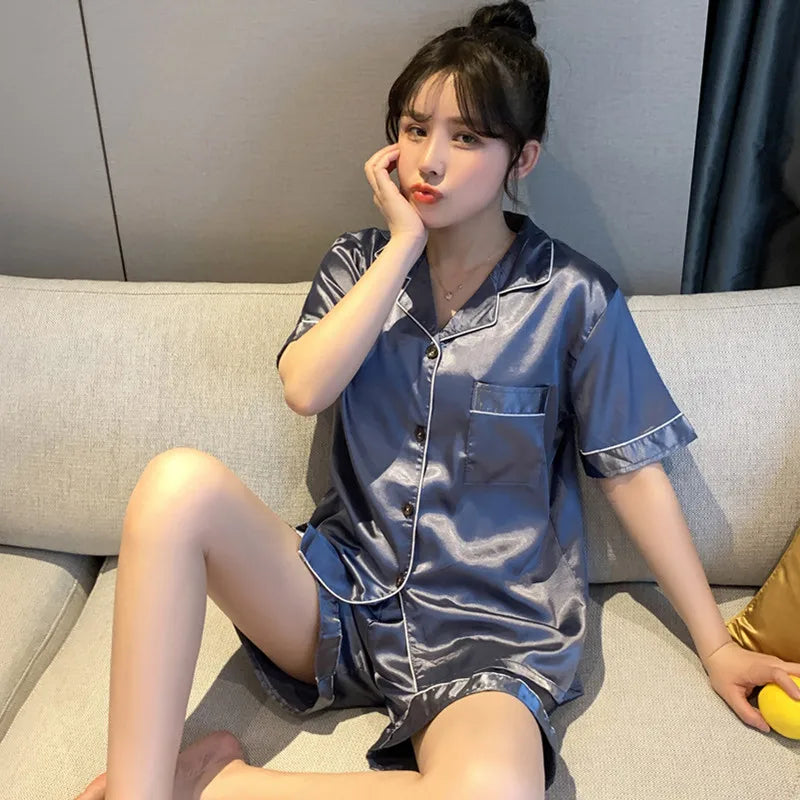Do Newborns Wear Pajamas? The Essential Guide to Dressing Your Baby for Sleep
Table of Contents
- The Significance of Pajamas for Newborns
- Factors Influencing Sleepwear Choices
- Seasonal Considerations for Dressing Your Newborn
- Recommendations for Safe Sleep Practices
- FAQs About Newborn Pajamas
- Conclusion
When it comes to nurturing a newborn, many parents find themselves inundated with questions about what their little ones need, especially regarding sleepwear. One of the most common queries we hear is, "Do newborns wear pajamas?" The answer is multifaceted and can significantly influence your baby's comfort and safety during those precious sleep hours.
As we navigate this topic together, we’ll explore the importance of suitable sleepwear for newborns, how to ensure they are comfortable while sleeping, and the best practices for dressing them at different times of the year. By the end of this post, we aim to equip you with the knowledge to make informed decisions about your baby's nighttime attire.
In this guide, we’ll cover:
- The significance of pajamas for newborns
- Factors influencing sleepwear choices
- Seasonal considerations for dressing your newborn
- Recommendations for safe sleep practices
- FAQs about newborn pajamas
Let’s dive into this essential topic to help ensure your baby’s sleep experience is as cozy and safe as possible.
The Significance of Pajamas for Newborns
When we think of pajamas, we often associate them with comfort and relaxation. For newborns, pajamas serve a practical purpose beyond mere aesthetics; they play a crucial role in ensuring a safe and restful sleep environment.
Comfort and Temperature Regulation
Newborns, unlike adults, are unable to regulate their body temperature effectively. They rely on external factors, including their clothing and sleep environment, to maintain a comfortable temperature. According to the American Academy of Pediatrics, dressing your baby in appropriate sleepwear can help prevent overheating and chilling.
Breathable Fabrics: Choosing pajamas made from breathable materials, such as cotton, is essential. Cotton allows for airflow and helps wick away moisture, reducing the risk of your baby becoming too hot during sleep. Our Relaxed Nights collection features premium fabrics designed for comfort, ensuring that your baby sleeps soundly through the night.
Safe Sleep Environment
In addition to comfort, pajamas contribute to creating a safe sleep environment. Loose clothing can pose a suffocation risk, especially for infants who are still developing their motor skills. Pajamas designed for infants typically have snug fits, which reduce the chances of them riding up and covering your baby's face.
Furthermore, the pajamas should be free from any embellishments, such as buttons or strings, which could be choking hazards. At Relaxed Nights, we prioritize safety in our designs, ensuring that every piece of nightwear is crafted with care and attention to detail.
Factors Influencing Sleepwear Choices
Several factors can influence your decision when it comes to choosing pajamas for your newborn. Understanding these elements can help you select the best options for your little one.
Age and Developmental Stage
As your baby grows, their sleepwear needs will change. Newborns typically wear footed pajamas or onesies that provide warmth and security. As they reach their first few months, you may want to transition to lightweight pajamas or sleep sacks that allow for more freedom of movement while still ensuring warmth.
Room Temperature
The temperature of your baby’s sleeping environment plays a pivotal role in determining what they should wear. The recommended room temperature for infants is between 68°F and 72°F (20°C - 22°C).
If the room is on the cooler side, you might opt for thicker pajamas or add layers, such as a lightweight sleep sack over a onesie. Conversely, in warmer months, breathable short-sleeved pajamas or even just a diaper with a lightweight swaddle could be suitable.
Personal Preference
Every baby is unique, and what works for one might not work for another. As parents, it’s essential to observe your baby's cues. Are they fussy when dressed in a certain fabric? Do they seem to enjoy snuggling in a particular type of sleepwear?
Tailoring their pajamas to their preferences can help ensure they feel secure and comfortable, promoting better sleep.
Seasonal Considerations for Dressing Your Newborn
Dressing your newborn appropriately for the season can significantly influence their comfort during sleep. Let’s explore how to adapt their pajamas to different weather conditions.
Dressing for Cold Weather
In colder months, it’s crucial to keep your baby warm without overheating them. Layering is often a successful strategy. Start with a snug onesie as a base layer, then add a thicker footed pajama or a sleep sack designed for colder weather.
Fabric Choice: Opt for fabrics like fleece or thicker cotton, which provide warmth while remaining breathable. Our Relaxed Nights collection offers a variety of options, ensuring that your baby stays cozy and comfortable without the risk of overheating.
Dressing for Warm Weather
During warmer months, keeping your baby cool is the priority. Lightweight fabrics, such as cotton or muslin, are ideal for this purpose.
You may choose a short-sleeved onesie or lightweight footed pajamas. In extremely warm conditions, consider dressing your baby in just a diaper and a breathable swaddle.
Remember to monitor your baby's temperature regularly, as newborns can easily become uncomfortable if they are overdressed.
Recommendations for Safe Sleep Practices
As we emphasize the importance of pajamas, it’s equally vital to adhere to safe sleep practices to ensure your newborn is sleeping securely. Here are some essential guidelines:
Follow the AAP Guidelines
The American Academy of Pediatrics (AAP) provides guidelines to help reduce the risk of Sudden Infant Death Syndrome (SIDS). Here are some key recommendations:
- Back to Sleep: Always place your baby on their back for sleep, even for naps.
- Safe Sleep Environment: Use a firm mattress covered with a fitted sheet. Avoid soft bedding, pillows, or stuffed animals in the crib.
- Dress Appropriately: Dress your baby in one layer more than you would wear yourself in the same room temperature.
Monitor Temperature Regularly
To ensure your newborn remains comfortable throughout the night, regularly check their temperature. A good practice is to feel their chest or back—these areas can provide a more accurate indication of their body temperature than hands or feet, which may feel cooler.
If your baby feels hot to the touch or is sweating, it may be time to remove a layer. Conversely, if their core feels cool, consider adding a layer—just don’t use loose blankets to cover them, as this could pose a suffocation risk.
FAQs About Newborn Pajamas
As we wrap up this guide, let’s address some frequently asked questions regarding newborn pajamas.
1. Do newborns need pajamas?
Yes, newborns benefit from wearing pajamas or footie onesies to ensure they are comfortable and warm. Pajamas help regulate their body temperature and provide a safe sleep environment.
2. What materials are best for newborn pajamas?
Opt for breathable, natural fabrics such as cotton or bamboo, which help regulate temperature and reduce the risk of overheating.
3. Can newborns wear footed pajamas?
Absolutely! Footed pajamas are a popular choice for newborns as they keep their little feet warm while providing comfort and ease of movement.
4. How should I know if my baby is too hot or cold?
Monitor your baby’s core temperature by feeling their chest or back. Signs of overheating include sweating, flushed cheeks, or a clammy feeling. Conversely, if their core feels cool to the touch, they may be too cold.
5. Is it safe for newborns to sleep with hats?
The AAP recommends against using hats for sleep after the first few hours of life. Hats can increase the risk of overheating and suffocation, so it’s best to avoid them during sleep.
6. What should I avoid when dressing my newborn for sleep?
Avoid loose clothing, sleepwear with strings, and heavy blankets in the crib. Ensure that the pajamas fit snugly but comfortably, without any choking hazards.
Conclusion
In conclusion, understanding how to dress your newborn for sleep is crucial for ensuring their comfort and safety. From selecting the right materials to monitoring room temperature, every detail matters. By following the guidelines outlined in this post, you can provide a nurturing and secure sleep environment for your little one.
As we embrace the journey of parenthood together, let’s prioritize comfort and safety for our babies. Remember, at Relaxed Nights, we are dedicated to offering premium nightwear that combines elegance with comfort—ensuring that your little ones sleep soundly through the night.
Explore our curated collections today to find the perfect pajamas for your newborn, and let’s create a cozy nighttime routine that fosters sweet dreams and restful nights.
Together, we can nurture our children’s well-being, one beautiful night at a time.



